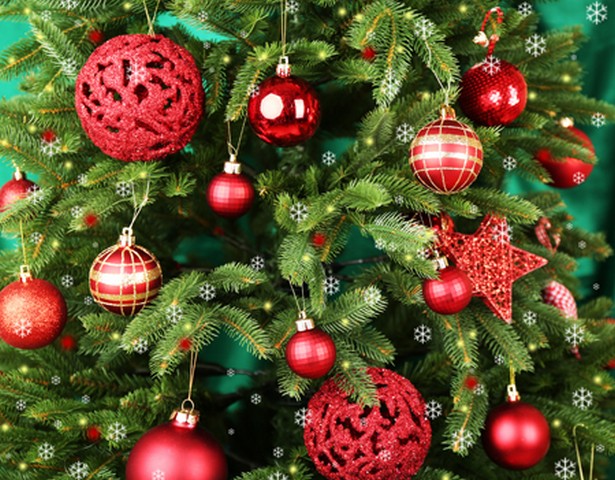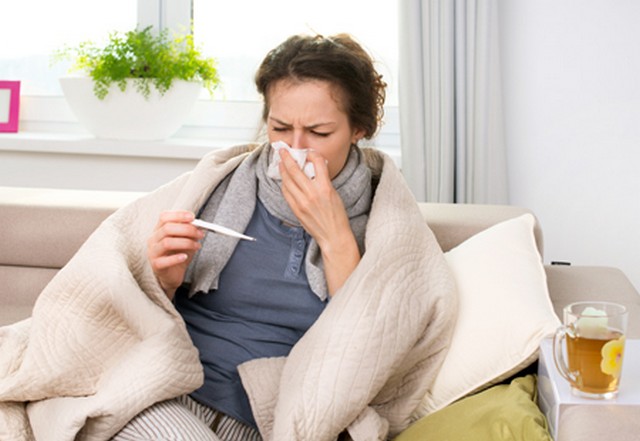Your Christmas Tree Is Not Only A Fire Hazard, But Can Also Make You Sick From Mold!

PuroClean is dedicated to informing our customers about mold and the health related concerns it causes.
We are also passionate about fire prevention, which is particularly important during the holiday season because of the fire hazards posed by christmas trees.
This article has two goals.
- First, we explain what causes Christmas Tree Syndrome and provide recommendations on how you can minimize the potential health issues caused by this indoor air quality issue.
- Second, fire prevention. Listed in this article are the top 8 Christmas tree fire safety tips.
The information in this article will help you identify whether or not your Christmas tree is making you sick and also provides you with tips to ensure that your tree does not pose a fire safety hazard.
What is Christmas Tree Syndrome?

A newspaper article was published to explain the potential health concerns caused by Christmas trees: “How CHRISTMAS TREES can cause hay fever hell: Pollen grains, dust and mould can trigger sneezing, coughing and a runny nose.” The article dubbed the illness, Christmas Tree Syndrome, because 1 in 3 (approximately 35 percent) people get sick, suffering from hay fever like symptoms, soon after the Christmas tree is set up in the home.
Typical signs that your tree is making you ill include the following:
- Asthma attacks, usually triggered by cladosporium mold
- Rhinitis
- Runny nose
- Sinus pain
- Sneezing
- Wheezing
- Coughing
- Cold like symptoms, that subside when away from the home or the room with the tree in it.
Initially, it was thought that tree pollen or even the weed killer applied to the Christmas trees made people ill.
However, as the studies below conclude, the core cause of Christmas Tree Syndrome is mold, which releases spores and causes allergic reactions:
- Researchers at St. Vincent’s Medical Center in Bridgeport, Connecticut, found that a room containing a fresh Christmas tree for two weeks had mold levels that were five times the normal level. Other studies have shown that levels this high can cause allergic rhinitis and asthma symptoms, says the study’s coauthor, allergist and immunologist Philip Hemmers. (A fresh Christmas tree for two weeks had mold levels that were five times the normal level)
- In another study Dr. John Santilli, compared the level of mold spores in the home before and after the tree was placed in the home. The normal level of mold spores is 800 per cubic meter, but within 14 days of the Christmas tree being in the home, the level of mold spores increased to 5,000 spores per cubic meter.
- Another scientific study by allergy specialist, Dr. Lawrence Kurlandsky at Upstate Medical University in New York set out to determine why respiratory illnesses peak around Christmas. The study found 53 different kinds of mold, including, aspergillus, penicillium, cladosporium and alternaria, which can trigger asthma attacks, sneezing and a runny nose. One of the key conclusions made by this study was 70 percent of the molds found triggered allergies and asthma.
How Do I Minimize Mold Exposure From My Christmas Tree?
Mold spores are found naturally on Christmas trees, which will flourish once they are in a centrally heated home.
With this in mind, if you can manage Christmas with an artificial tree, that is the best solution. Please note, artificial trees can accumulate a layer of dust and even mold if not stored properly. Be sure to store your artificial tree in a dry area and preferably in plastic tubs to minimize exposure to moisture and dust.
However, if you must use a live Christmas tree, here are some tips to minimize the health impact:
- Thoroughly hose down your tree and let it dry before bringing it into the house. If you bought your tree at a nursery, ask if they have tree washing services.
- Clean all ornaments and lights before putting on the tree; they can harbor dust and molds. Store all decorations in plastic containers that can be easily wiped down since cardboard can potentially attract dust and mold.
- Minimize exposure. If you’re sensitive to molds, keep a live Christmas tree no more than four to seven days.
- Run an air purifier in the same room as the Christmas tree. This may help alleviate symptoms.
- Allergy medication may also help alleviate some symptoms as well.
- Since mold spores may accumulate the longer your tree is in the house, consider getting rid of it first thing on the 26th.
Christmas Tree Fire Safety Tips
Now that you understand the potential health concerns caused by Christmas trees, let’s look at some of the potential fire hazards that you can take steps to prevent to ensure that your family is safe during the holidays.
Christmas Tree Fire Statistics
According to the National Fire Protection Association (NFPA), 230 Christmas tree fires are reported every year causing $18.3 million in property damage.
Sadly, one in 40 Christmas tree fires result in a death, compared with one in 142 for total home fires.
The cause of Christmas tree fires include:
- 32% electrical failures or malfunctions
- 17% heat source close to tree
- 12% decorative lights on line voltage
- 7% by candles
Top 8 Christmas Tree Fire Safety Tips
- Keep it out of the way. Do not place your tree near doors or exits.
- Water Your Tree So That It Is Moist. Natural trees should be cut at a 45 degree angle at the base and placed in water. Make sure to water it regularly so it doesn’t dry out and increase the risk of a fire hazard.
- Decorate wisely. Use only non-flammable decorations.
- Keep heat away. Make sure your tree is at least three feet away from heat sources, such as fireplaces, radiators, space heaters, candles or heat vents.
- Check Your Lights. If you have older lights that have been in storage for a year, examine the wiring and bulb sockets before use. Own a pre-lit tree? Take some time to examine the lights and the wiring before setting it up.
- Do Not overload sockets. Connect a maximum of three strands of lights together at any given time and avoid using extension cords if possible.
- Turn Your Lights Off. Try not to keep your lights on longer than necessary. Use a timer or turn them off before you go to sleep in the evening to lessen the fire hazard and save some money on your electricity bill.
- Dispose Of Your Tree As Soon As Xmas Is Over. Try not to put your tree up too early or leave it up too long. Once you are done with it, check with your local authorities to see what the tree disposal process is for your community. NFPA statistics show that nearly 40 percent of home fires that begin with Christmas trees occur in January.
Got Mold or Fire Prevention Questions?
If you have questions or concerns about mold, indoor air quality, or just want some fire prevention advice, don’t hesitate to give us a call, 877-750-7876 or send us an e-mail.

